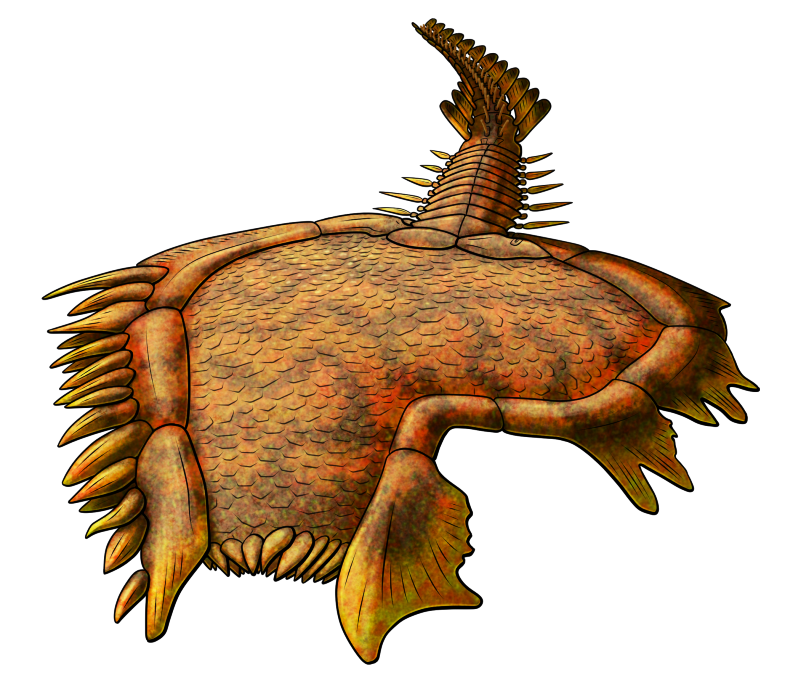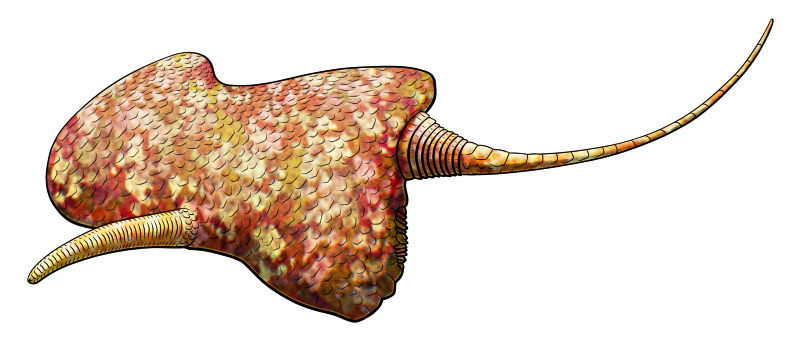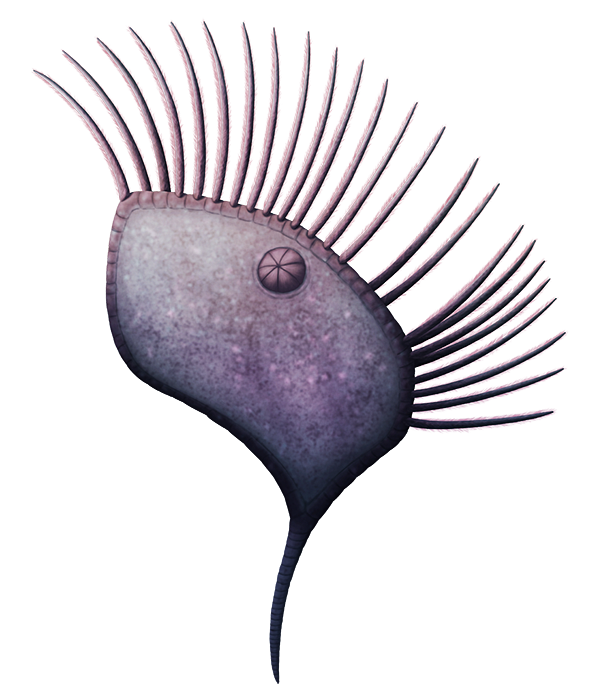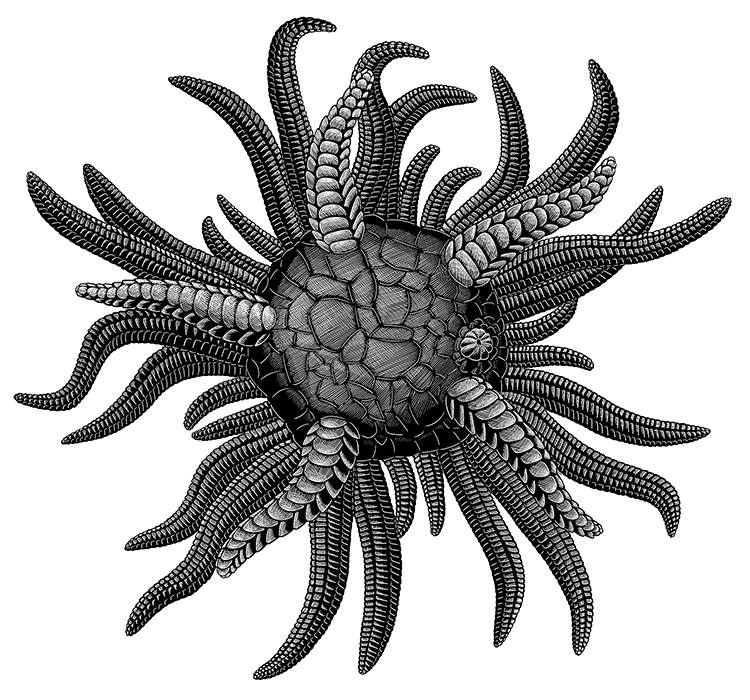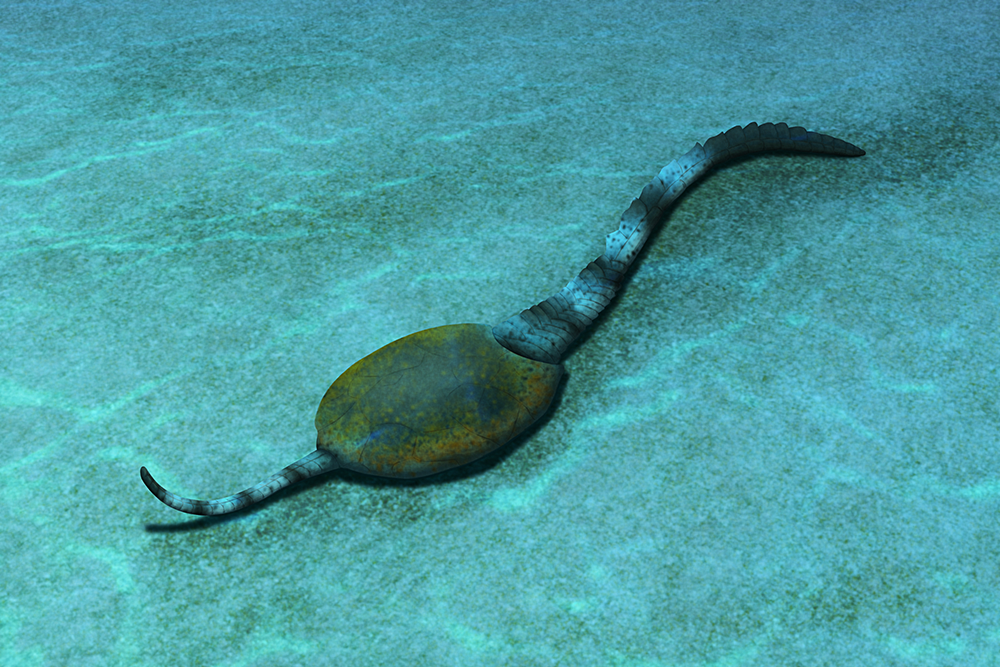Early echinoderms seem to have gone through an asymmetrical phase before starting to evolving their characteristic radial symmetry. The first truly radial forms had three-way symmetry, but soon a group called the edrioasteroids upped that count to five.
First appearing in the fossil record around 525 million years ago in the early Cambrian, edrioasteroids were mostly shaped like discs or domes, and were immobile filter-feeders that lived permanently attached onto surfaces like the seafloor or the shells of other animals. Unlike most modern echinoderms their pentaradial symmetry was actually created by taking a tri-radial body plan and forking two of their arms near the bases to create a total of five.
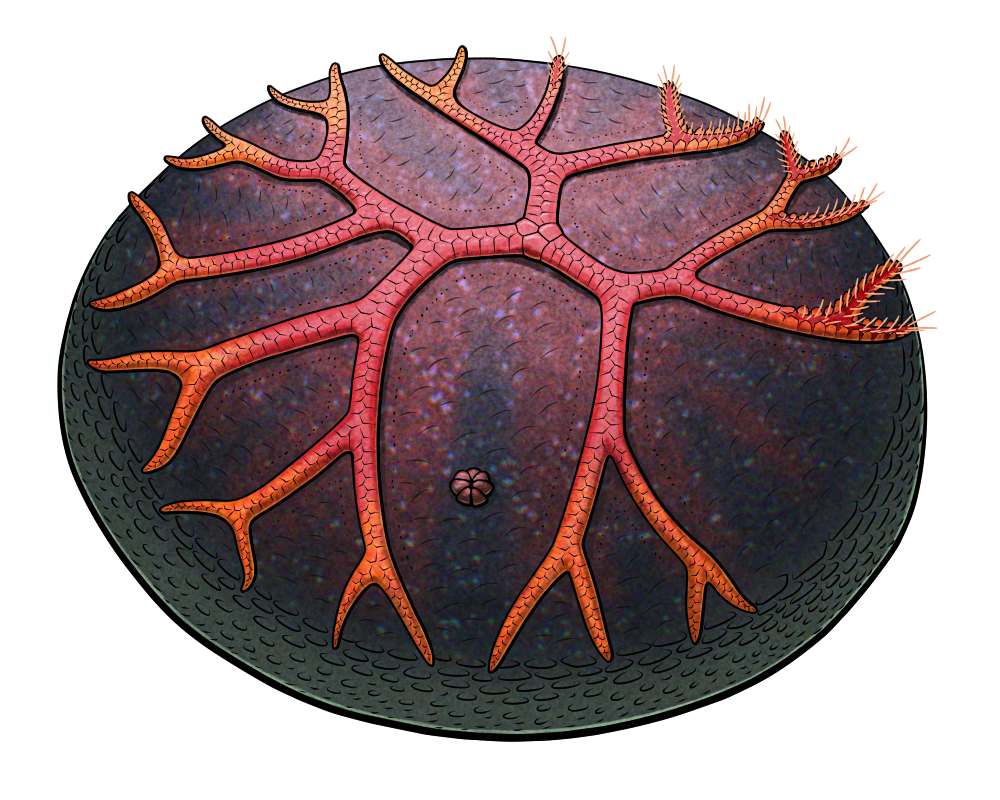
Thresherodiscus ramosus was an unusal edrioasteroid that lived in the shallow seas of what is now central Canada during the late Ordovician, around 460-450 million years ago. Up to about 4cm in diameter (~1.6″), its arms split additional times at irregular intervals, creating a complex asymmetrical branching pattern across its upper surface.
The tips of its arms protruded slightly over the rim of its body, and along with the erratic extra branching this may have been an adaptation to increase its food-gathering surface area.
Another group of early pentaradial echinoderms known as the blastozoans were characterized by erect feeding appendages called brachioles. But some blastozoans abandoned their five-way symmetry in favor of much stranger arrangements, sometimes having as few as two arms – and, in some cases, two mouths.
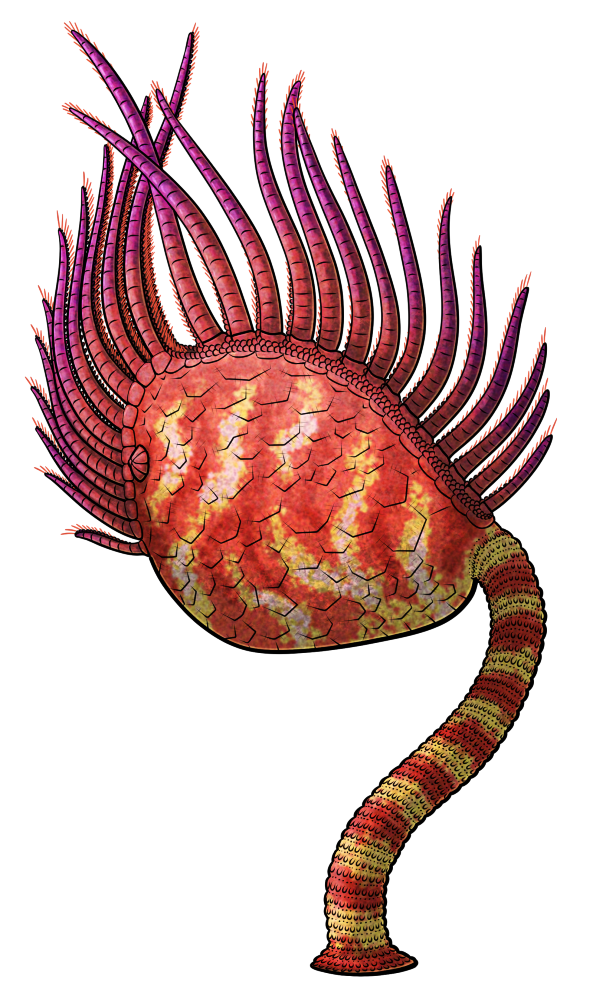
Known from the same general area and time period as Thresherodiscus, Amygdalocystites radiatus was part of an Ordovician-to-early-Silurian lineage known as paracrinoids, which attached their irregularly-shaped bodies to the seafloor via a stem.
About 5cm long (~2″) Amygdalocystites had just two asymmetric arms forming “food grooves” along its upper edge, each lined with numerous long brachioles along just one of their sides. It probably orientated itself so its body was facing down-current, which would have created eddies that brought suspended food particles within easier reach of its brachioles.

